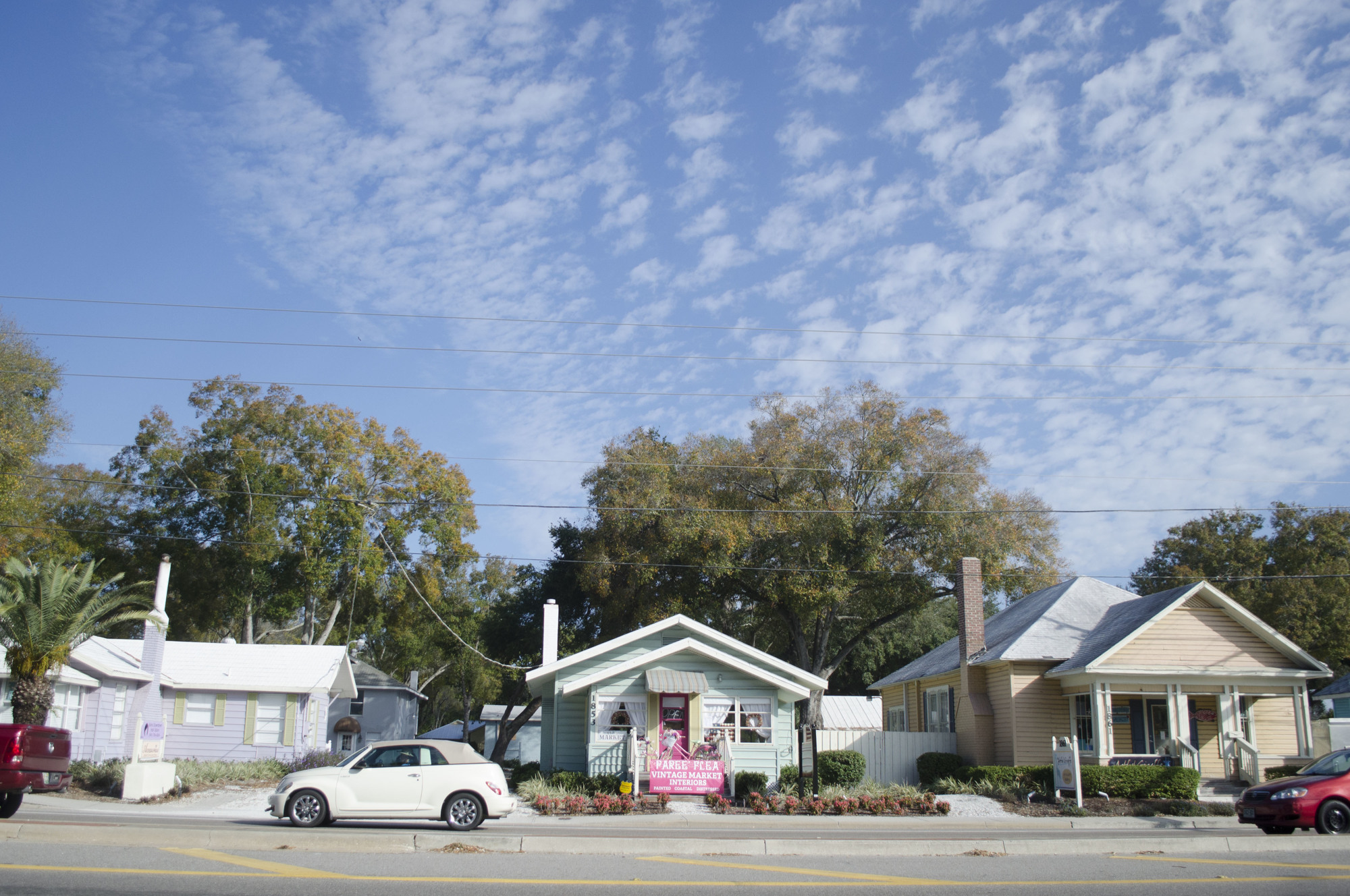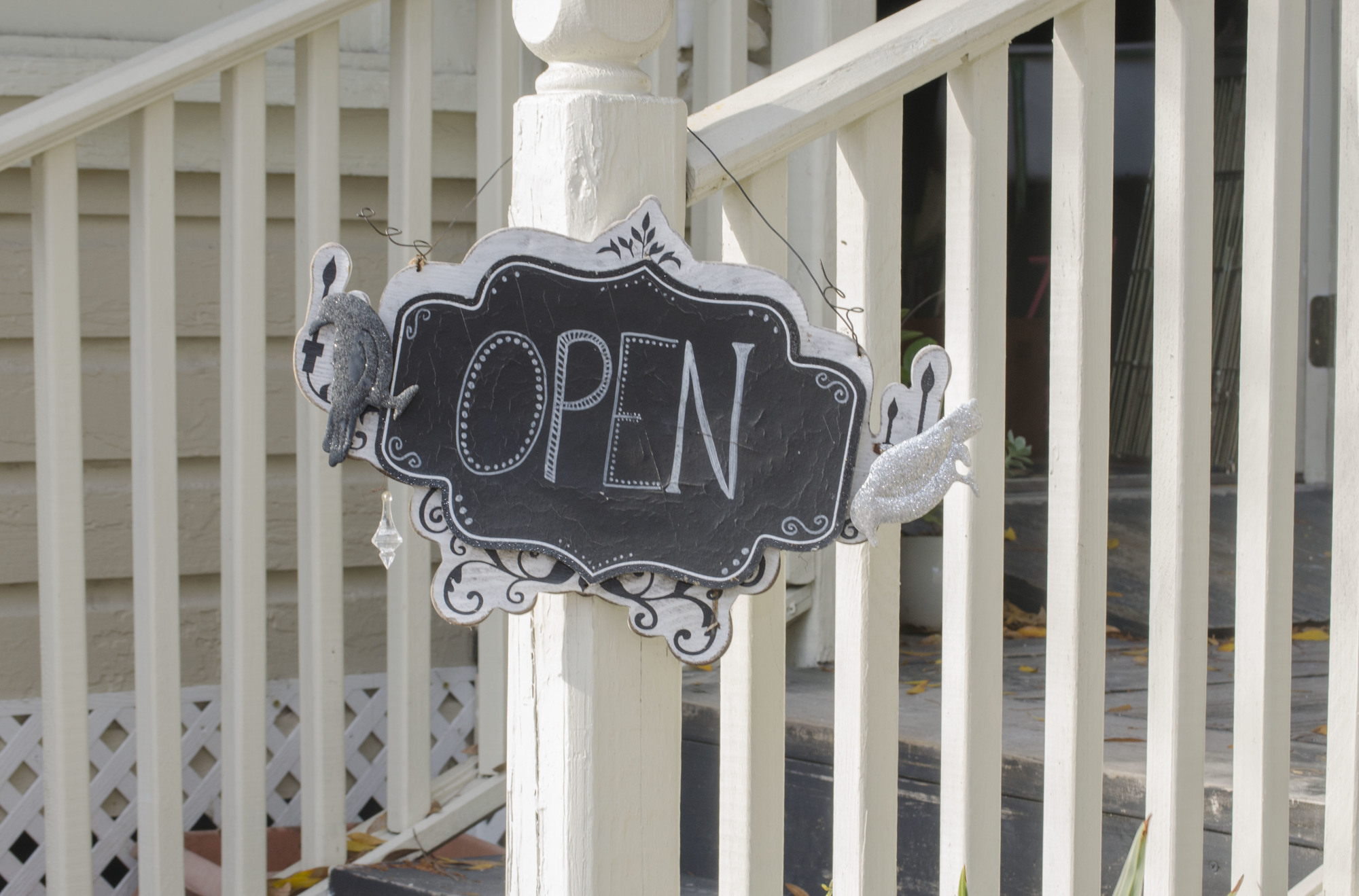- February 21, 2025
-
-
Loading

Loading

Standing on the sidewalk in the 1800 block of Fruitville Road is like being suspended in time.
To the south, cars whiz down Fruitville Road. To the north, 1920s bungalows sit unbothered by the noise of Sarasota’s burgeoning downtown.
“We’re in the middle of downtown, but yet you feel like you’re in a secluded little area,” Sue Forbes said. “It’s actually, to me, a hidden gem in the city.”
Forbes is the owner of the Artful Giraffe, an art store in a 1924 bungalow at 1861 Fruitville Road. Her store is one of 12 that make up what is referred to colloquially as the Historic Downtown Village.
The building, along with six others along Fruitville, harkens to Sarasota’s circus glory days and carry the lore of a bygone era. Legend has it that John Ringling built some of the houses for his employees. That connection wasn’t enough to save the buildings from falling into disrepair.

By the time property owners Marlene and Alex Lancaster started buying parcels in the late 1980s, the block’s charm had lost some of its luster. After buying one of the structures, they discovered graffiti on the walls and evidence of a fire.
“You’ve got to be ready to get your hands dirty with this stuff,” Marlene Lancaster said.
Despite the pitiful state, the Lancasters saw potential.
“We knew that there had been some things in the city’s plan that would be developing (the area) at some point in the future, and we wanted to be a part of it,” Marlene Lancaster said.
The neighborhood didn’t transform over night. The Lancasters bought houses on the block piece by piece during the 1980s, ’90s and early 2000s. They benefited from declining property values in the late 2000s and purchased the last of their parcels on the block, now The Tea House, at a foreclosure sale on the courthouse steps.
“Once we had control, then we started converting,” Marlene Lancaster said.
The first home to be renovated into a commercial venture was the Breakfast House. The small shops that followed all have one thing in common — the businesses are owned and operated by women.
Many of the shop owners are proud of their sisterhood, but concede it was not intentional. Their explanation is simple. Women are more likely to see the potential in an alternative commercial district.
“I hate to say it’s a little more feminine, but it is,” said Keffie Lancaster, the daughter of Alex and Marlene who owns Keffie’s Ecochic Boutique.
“We have locals that come in here day after day that go, ‘Gosh we didn’t even know this place was here,’”
-Lou Abel
Although not an official merchants association, the stores of the Historic Downtown Village have a symbiotic relationship. The Crystal Cave trades geodes for cookies from the Cookie Cottage. The Artful Giraffe promotes the Cookie Cottage to its clientele. And, once a month, the village comes together for its Fourth Friday event — an evening of extended shopping hours with live music, demonstrations, food, beverages and more.
Despite their efforts, exposure is the village’s most pressing challenge.
“We have locals that come in here day after day that go, ‘Gosh we didn’t even know this place was here,’” Lou Abel said.
Abel opened her store, Paree Flea, at 1853 Fruitville Road in September 2016. She’s one of the village’s latest arrivals, and was taken by the charm of the area. Neighbors chat from their back porches in the morning before the shops open and wave across the parking lot.
Despite its struggle for exposure, many shop owners say the village has grown. Two more houses along Fruitville east of the central village have been renovated and incorporated to match the village’s historic colorful facade.
But as the Historic Downtown Village creeps west, construction is crawling east.
“Certainly, the development in downtown hasn’t pushed down our way … but eventually it will…” Alex Lancaster said. “The city can only grow so many directions. It’s not going to grow south.”
The district poses a contradiction in a downtown teaming with new development. As the city changes, the Downtown Historic Village has largely remained unchanged.
While admitting the development could affect the village, many shop owners aren’t overly concerned.
Yet, Abel sees the development downtown and wonders about the future of her piece of Sarasota’s past.

“We love the history of it,” Abel said. “We love the future that it could have, and we would love to see the village maintained and not mowed down … We need to hold on to some of the Ringling history … and this is a big part of it.”
Marlene and Alex Lancaster have no plans to sell or redevelop. They say they are proud of what they built. But they’re not naive. They know Sarasota’s history is one of change.
“We’re not really a little city anymore. We’re becoming a big, grown-up city,” Marlene Lancaster said. “But that’s always been Sarasota. It’s always reinventing itself.
“We have the history of the fishing village. We’re not a fishing village anymore,’’ she said. “It’s been a city that’s been on the move since the beginning. I think it’s evolving generally for the better.”
For now, the village will putter on at its casual pace. The neighbors will keep waving from across their parking lot as modern development creeps upward mere blocks from their enclave.
“It’s out of our control,” Forbes said.